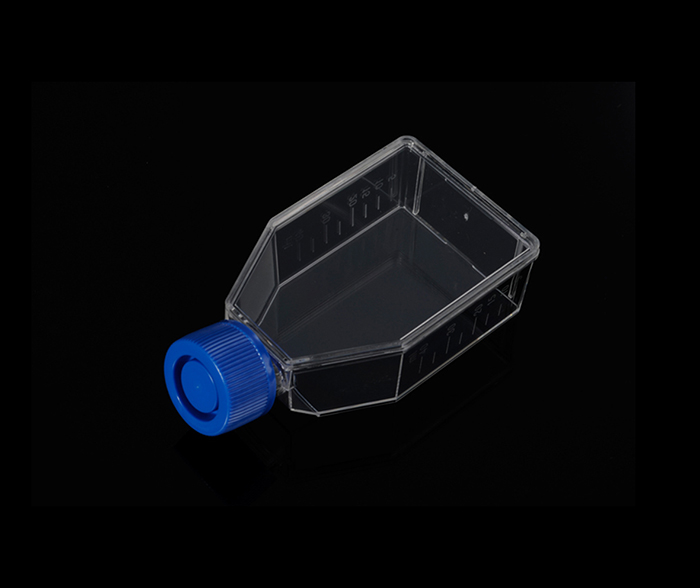Purpose and Function of Cell Culture Flasks
2024-07-09
Cell culture flasks are essential tools in biological and medical research, providing a controlled environment for growing and maintaining cells outside of their natural habitat. Here’s an overview of cell culture flasks and their significance in scientific research:
Purpose and Function
1. Cell Growth and Maintenance:
- Substrate Surface: Designed with a sterile surface area where cells adhere and proliferate under controlled conditions.
- Nutrient Supply: Allows for the provision of cell culture media containing nutrients, growth factors, and supplements necessary for cell growth.
2. Sterility and Contamination Control:
- Sterile Environment: Manufactured under sterile conditions to prevent contamination that could affect cell viability and experimental results.
- Ventilation and Filtration: Some flasks feature filters or vents to allow gas exchange while maintaining sterility.
Types of Cell Culture Flasks
1. Tissue Culture Flasks:
- Standard Flasks: Available in various sizes (e.g., T25, T75, T175) with flat or angled surfaces to optimize cell attachment and growth.
- Surface Treatments: May be treated with coatings like collagen, gelatin, or polylysine to enhance cell adhesion for specific cell types.
2. Suspension Culture Flasks:
- Spinner Flasks: Designed for suspension cultures where cells grow freely in a liquid medium, stirred to maintain oxygen and nutrient availability.
3. Specialized Flasks:
- Multilayer Flasks: Stackable flasks with multiple layers to increase surface area while conserving incubator space.
- Perfusion Flasks: Allows continuous medium exchange to mimic physiological conditions more closely.
Key Features
1. Graduated Markings: Facilitates accurate measurement and monitoring of cell culture volume and growth progression.
2. Cap or Plug Closure: Provides a secure seal to maintain sterility and prevent evaporation while allowing access for media changes and sampling.
3. Material Composition: Typically made from optically clear plastic (e.g., polystyrene) to facilitate microscopic observation and monitoring of cell growth.
Applications
1. Basic Research: Fundamental studies of cell biology, physiology, and genetics.
2. Drug Discovery and Development: Screening and testing of potential therapeutics on cultured cells.
3. Regenerative Medicine: Production of cells for tissue engineering and transplantation.
Considerations
1. Aseptic Technique: Proper handling and use of cell culture flasks are crucial to prevent contamination and maintain cell health.
2. Media and Supplements: Selection of appropriate culture media and supplements tailored to the specific cell type and experimental objectives.
3. Incubation Conditions: Optimal temperature, humidity, and gas composition (e.g., CO2 levels) must be maintained for successful cell growth and viability.
Conclusion
Cell culture flasks are indispensable tools in biomedical research and biotechnology, providing a controlled environment for cultivating cells under conditions that mimic their natural habitat. Their design, materials, and features are tailored to support cell growth, viability, and experimental reproducibility in various scientific disciplines.



